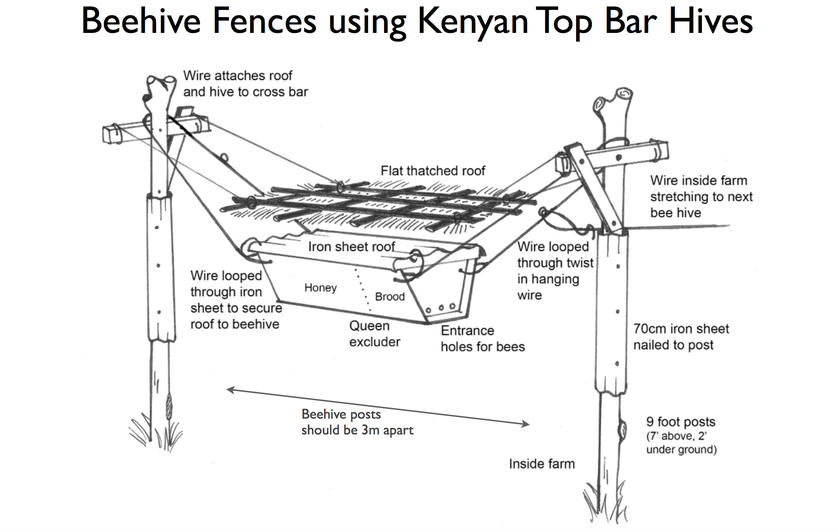Protecting crops from raiding elephants is not an easy task for Africans farmers where wild elephants often roam free, until a group of British researchers working in Kenya made a remarkable discovery —elephants are naturally scared of honey bees. Zoologists found that elephants would quickly move away if they heard so much as the sound of a buzzing hive. These elephants have even adopted a special call used to warn the rest of the herd when they are in the vicinity of bees.
So Oxford zoologist Lucy King and his colleagues took the idea to its logical conclusion —the creation of a fence containing beehives. This so called ‘beehive fence’ was first deployed as a test in Kenyan farms by a charity organization called “Save the Elephants”. Farms were fenced off by nine beehives hung under small thatched roofs. Each beehive was placed ten meters apart and were linked together by wire. Researchers found that farms protected by beehives had far less human-elephant conflict than unprotected farms.

Photo credit: Lucy King
That was in 2002. Beehive fencing is now a growing phenomenon in Africa and Asia. The fences are easy to make using only locally sourced materials, and they cost a fraction compared to the cost of concrete barriers and electrified fences. Even with the hives empty of bees, elephants are wary of nearing them as the smell of the hives is enough a deterrent. The hives are connected by wires so that if an elephant tries to cross the barrier, the interconnecting wire shakes the hives releasing the bees.
The resident communities also benefit from the bees, through the harvest and sale of honey. Pollination work of the bees can also increase biodiversity and even increase the yield of the crop that they protect.
Researchers are not sure why elephants are scared of bees, because an elephant’s skin is too thick for bees to cause any damage. But there are areas where bees can do sting elephants, for example, around eyes and inside of the trunk. It’s possible that elephants avoid bees to prevent such an experience.

Photo credit: www.bring-the-elephant-home.org

Photo credit: elephantsandbees.com

Sources: BBC / elephantsandbees.com



Excellent idea, with extra good unintended consequences also regarding pollination, diversity etc. Only down side is the name. Beehive fence, bet it took them moments to think that one up...
ReplyDelete